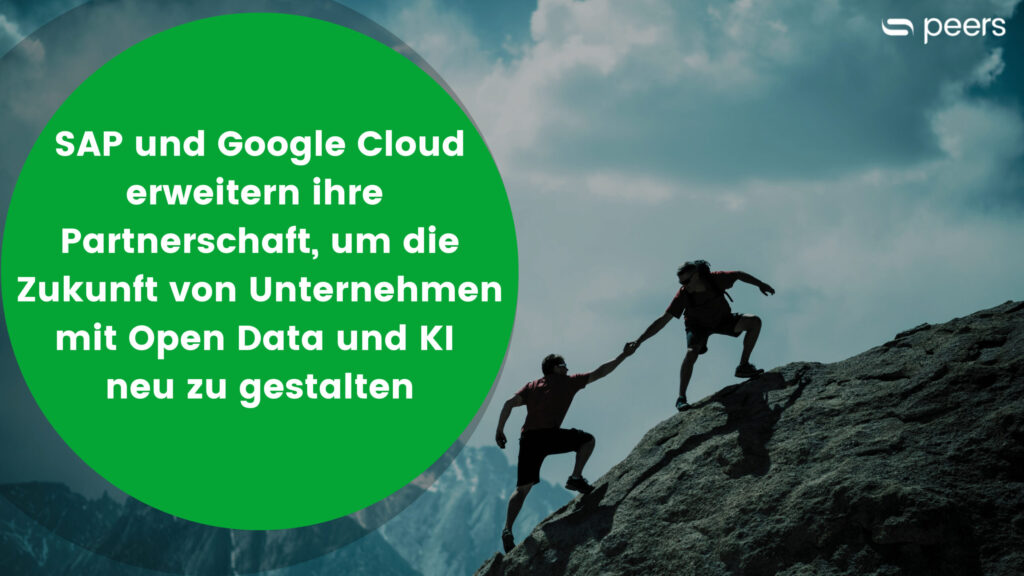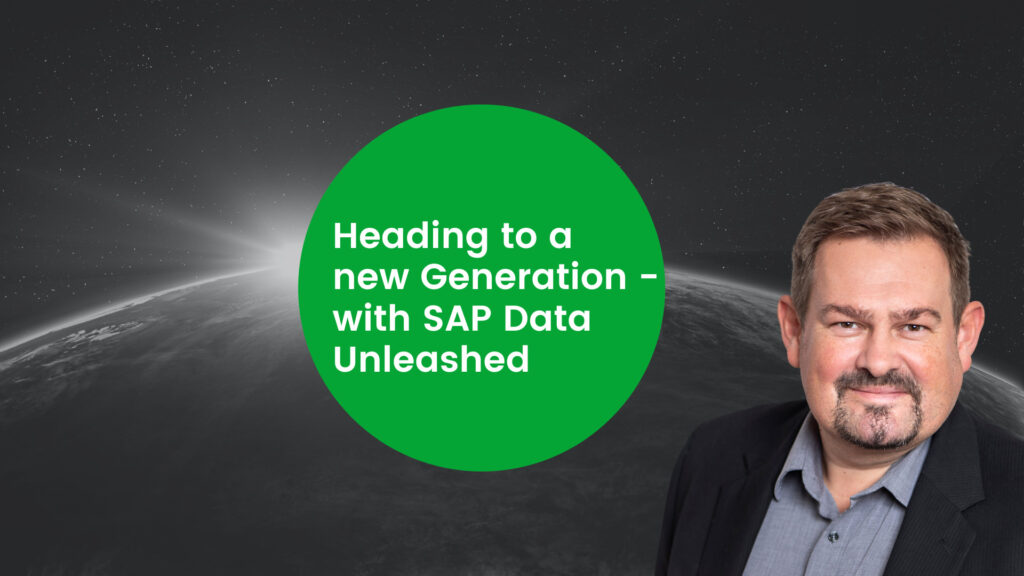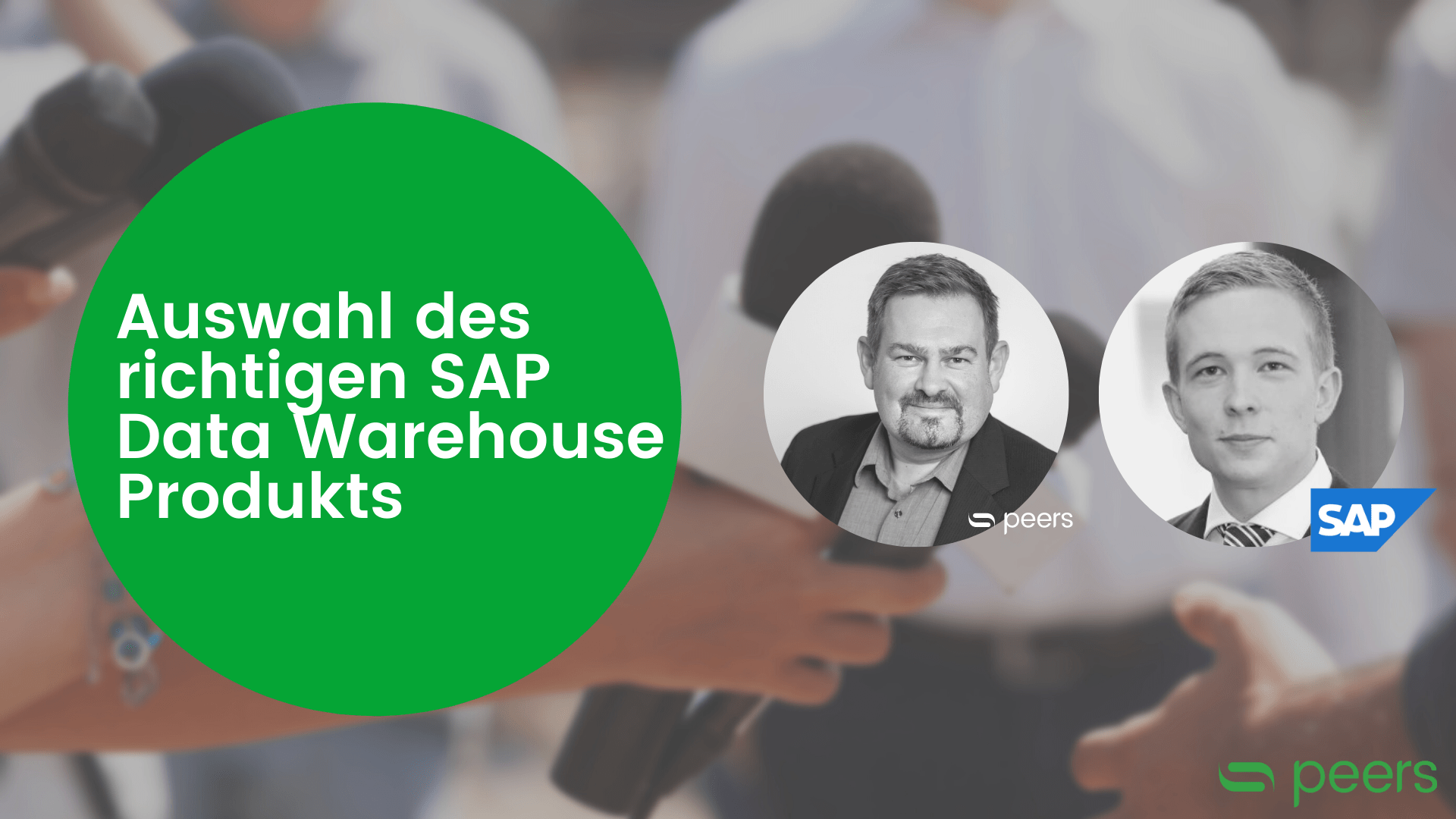- Media
- Data Warehouse
- 4 min reading time

Michael May
Finance departments have more and more data at their disposal. The challenge is to evaluate it in a mathematically and economically meaningful way. One example is Predictive Sales Forecast, an automated, self-learning meta-algorithm that automatically selects the statistically best algorithm from a multitude of algorithms and shows the main drivers of the sales forecast.
This article was published in the magazine S@apport (1-2/2021)
Download article as PDF
Why did s-peers' clients increasingly rely on the automation of financial planning?
In the central controlling of many companies, the monthly forecast is often still prepared manually, which is very time-consuming and prone to errors. With the introduction of an automated projection, controlling can be offered a high analytical added value at the push of a button. As part of the automation of financial planning, our clients rely on a system developed and implemented by us, which forecasts all forecast values - based on the latest algorithms - at the click of a mouse. This includes all forecast scenarios for all organisational business units, e.g. locations or individual companies. The planning variables usually include net sales and often also the cost of materials and goods, personnel and other operating expenses.
The advantages for the company are manifold. It benefits from a clearly structured flow of the monthly rolling projection process as well as from efficiency increases in the budgeting process. Both the density of information and the accuracy of forecasts are massively increased, while the manual workload is greatly minimised. Valuable resources can thus be freed up for other tasks and the susceptibility to errors is greatly reduced. The accelerated uniform forecast creates more effective control options.
The forecasting methods we use are derived from classical and more recent time series analysis. This means that all possible variables, such as seasonal patterns, trends, calendars and holiday effects, can be taken into account. Where appropriate for time series, machine learning methods such as neural networks, classification and regression trees can also be used.
The factual granularity of planning depends on the organisational structure and customer requirements and differs greatly between industry, services and trade. For the temporal gran ularity, the calendar month is usually defined. The time horizon of planning, i.e. how many periods in the future are to be forecast, can be fixed or flexible. In rolling planning, for example, the horizon becomes shorter and shorter with each new forecast, while the oldest periods that were originally planned/forecast have already been replaced by the actual data.
Well-known companies already rely on the system developed by s-peers and are thus making themselves fit for the future. Because with the automatically generated forecast values, the companies can react to fluctuations in the key earnings figures at any time in a forward-looking and timely manner.
s-peers Starter - simple and straightforward into automated rolling long-term forecasting:
With the s-peers Starter, s-peers offers the company a quick and safe entry into automated rolling long-term forecasting, while also benefiting from additional BI reporting functions.
Focus:
Automated rolling long-term forecast of sales volumes and turnover for all business units and product groups
Intelligent analysis tools (monitoring) support the monitoring of data quality efficiently (outlier analyses)
Predefined reports as a starting point for further analyses: comparison of the forecast values with the actual and previous year's values
IBCS®-compliant representations
Possibility to create own reports based on the predefined data model (self-service)
Collaboration and commenting functions
Functions:
To achieve highly accurate forecasts, the s-peers Starter provides 29 algorithms with up to 100 models. Model selection is done by a combination of Akaike Information Criterion (AIC) and Mean Absolute Percentage Error (MAPE) weighted by turnover.
The AIC evaluates each model based on its goodness of fit and corrects it by the number of its parameters. More complex models are penalised more heavily, so that the "most robust" model is selected. The MAPE (the mean percentage deviation of the forecast from the observed values) ensures comparability between the forecast accuracies of different time series. Sales volumes per product are forecast and multiplied by the last available monthly average price to obtain a reliable sales forecast. Forecasts are also possible for entities/sites or other business units.
Architecture:
The algorithm is triggered via the SAP Data Warehouse Cloud (DWC). All the necessary system libraries and algorithms are available via the web services of the Google Cloud Platform.
The automated sales forecast is integrated into an SAP Analytics Cloud Story - the forecast values are compared with the actual and previous year's values and can be analysed and processed accordingly.
Bundling the forecasting, analysis and reporting functionalities in a single platform with a uniform database enables seamless exchange between all business units (supported by collaboration and commenting functions, among other things).
- SAP Data Warehouse Cloud
- SAP Analytics Cloud
- R server (via Google Cloud Platform Services)
Ready-made report templates and integration of algorithms at the push of a button "Make Forecast":
s-peers Starter - uncomplicated procedure:
Fast deployment mode via cloud infrastructure
Set-up for s-peers starter and introduction
Full remote access mode available
Typical set-up time: 2-3 days
More precise results and greater transparency thanks to increased information density
Massively increased responsiveness through automation - calendar orientation increasingly a thing of the past
Elimination of manual, time-consuming, error-prone and incomplete extrapolation.
Objectified forecasts that give a fact-based picture
Multiple use and reusability of the algorithms provided by s-peers
Wide range of evaluation options in assured quality
Early opportunity for performance assessment through simulation
Conclusion:
Understanding the content of the data and the algorithms used for analyses and forecasts is an elementary key to placing it in the overall context. In the face of intelligent algorithms, it is no longer enough to be able to read data, establish associations or, better still, causalities and draw conclusions oneself. Rather, a comprehensive understanding of business management is necessary. Already during the development of algorithms, it is necessary to understand the problem embedded in the respective operative and strategic entrepreneurial context.
Users of the forecasts and decision support tools must be able to understand and evaluate the underlying assumptions and workings of the algorithms, including the many correlations.
In the end, people have to take responsibility for entrepreneurial decisions. The overriding maxim must therefore remain to explain decisions made with the support of such forecasts to the groups of people affected.
The dilemma that a powerful learning algorithm is not easily understandable and explainable and yet the derived decisions must be understandable and accountable is fundamental. It becomes particularly challenging when the algorithms are self-learning and develop their own logics and selection criteria based on this. Here, it will be crucial for acceptance, especially in important financial and controlling processes, that the autonomously determined findings can explain themselves and be made plausible, whether by pointing out patterns or through business expertise.
Read article as PDF
Published by:

Michael May
Managing Director

Michael May
How did you like the article?
How helpful was this post?
Click on the stars to rate!
Average rating 4.8 / 5.
Number of ratings: 4
No reviews yet! Be the first to rate this post.







